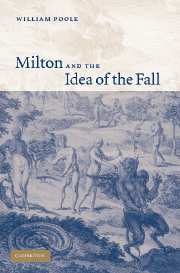Book contents
2 - Augustinianism
Published online by Cambridge University Press: 10 December 2009
Summary
AUGUSTINE
‘Let us admit’, wrote Voltaire on original sin, ‘that Saint Augustine was the first to authorise this strange idea, worthy of the fiery and romantic head of a debauched and repentant African, Manichaean and Christian, indulgent and persecuted, who spent his life contradicting himself.’ Augustine also incurred the wit of Gibbon, who brilliantly described the Western Church's adoption of the father's teachings as conducted ‘with public applause and secret reluctance’.
Such enlightened scorn was not the dominant tone of the age. The first full English translation of the City of God appeared in 1610 with the influential annotations of Juan Luis Vives (1492–1540), featuring on its title page a picture of the Sun dispersing its rays with the motto SIC AVGVSTINVS DISSIPABIT – ‘Thus will Augustine spread abroad.’ The continental Reformation itself had been intellectually established on the re-editing of Augustine, particularly the later Augustine. As Luther wrote in May 1517, ‘Our theology and St Augustine are progressing well … Aristotle is gradually falling from his throne.’ In 1506 Amerbach published his landmark eleven-volume edition of Augustine at Basel, where Erasmus, who had earlier persuaded Vives to write his commentary on the City of God, produced his own edition of the father in 1528–9. The other major edition of Augustine prior to the celebrated Maurist edition of 1679–1700 was the one prepared by the Louvain theologians and printed at Antwerp in 1576–7.
- Type
- Chapter
- Information
- Milton and the Idea of the Fall , pp. 21 - 39Publisher: Cambridge University PressPrint publication year: 2005

